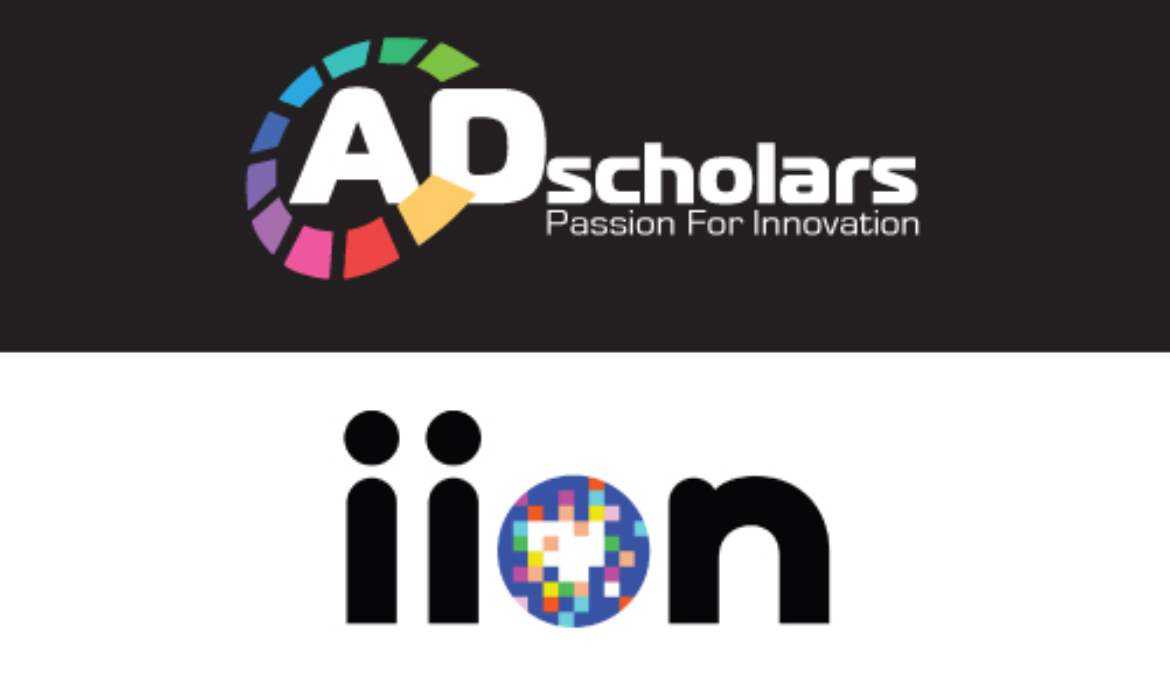Inside Rey Tiempo’s Gaming Odyssey: A Tale of Creativity and Strategy
Enter the dynamic world of creativity, advertising, and gaming with Rey Tiempo, a seasoned leader boasting two decades of experience across global networks. He has not only led teams to unparalleled success but has etched his name as the country’s preeminent Creative Director, consistently ranking among the region’s top creatives. His accolades, spanning renowned platforms like Cannes, One Show, Adfest, and more, underscore his mastery in crafting award-winning campaigns.
Recognized as the Experience and Innovations Lead for the work that gave the Philippines its historic first Cannes Lions in Gaming, Rey’s leadership roles transcend prestigious awards: as former President of the Creative Guild of the Philipines, where he spearheaded Creativefest Now, the all online creative event; as a jury member on esteemed panels in global award shows; and as recipient of the Alumni Achievement Award for his alma mater. Rey’s influence extends far beyond the confines of traditional advertising.
Beyond the corporate scene, Rey dons the hats of a musician, gamer, and columnist, innovating with his “Game On” column at Adobo Magazine. Join us for an engaging conversation as we delve into Rey’s journey, from award-winning campaigns to the ever-evolving intersection of gaming and marketing. Get ready for a peek into his treasure trove of rich experiences and expertise!
Tell us something about your journey and how your career has evolved since its inception?
I started as a junior copywriter, fresh from dropping out of law school. (a whole other telenovela worth of stories there). Eager to start getting into creating commercials (I marvelled at the idea of people actually writing ads I see on TV, I’ve always thought the commercials just wrote themselves!) Having studied literature, I quickly realized it didn’t align with ad writing. I had to unlearn my four years (sorry, Mom and Dad!) and just went at it like a sponge, at first imitating my copywriting heroes around me. Over time, I improved, earning leadership roles in creative teams across major local and global networks.
I’ve observed the industry changing over the years, witnessing roles within agencies evolve. Today, a creative leader must not only grasp the big picture but also navigate and shape technological advancements, even predicting the future. Adapting quickly is crucial in this fast-paced landscape, making the most successful creative leaders those who evolve rapidly.
From a “traditional” leadership role, I now lead a team of experience-based creatives, who are tasked to create campaigns that string together and bring to life the entire brand and customer experience. So that includes what we now term the “classic” creatives (TV/ Film, Print, Radio), along with CRM, PR, Influencer, Ecommerce, Tech, and yes… Gaming!
Gaming has, in fact, become a primary focus of the team, as more and more brands have now started to embrace its creative and business opportunities. As one of only very few local creative leads who have been pushing for gaming and marketing work, I have launched my own column for Adobo Magazine, called “Game On” and it’s the first of its kind, tackling the intersects between gaming and marketing. I have been working with brands and my teams, connecting with game publishers and gaming companies, and sitting down with industry leads as well as fellow passionate gamers, to truly understand in-depth and celebrate the full eXperience that straddles the ever-blurring line between these disciplines – hence the term gamingXmarketing.
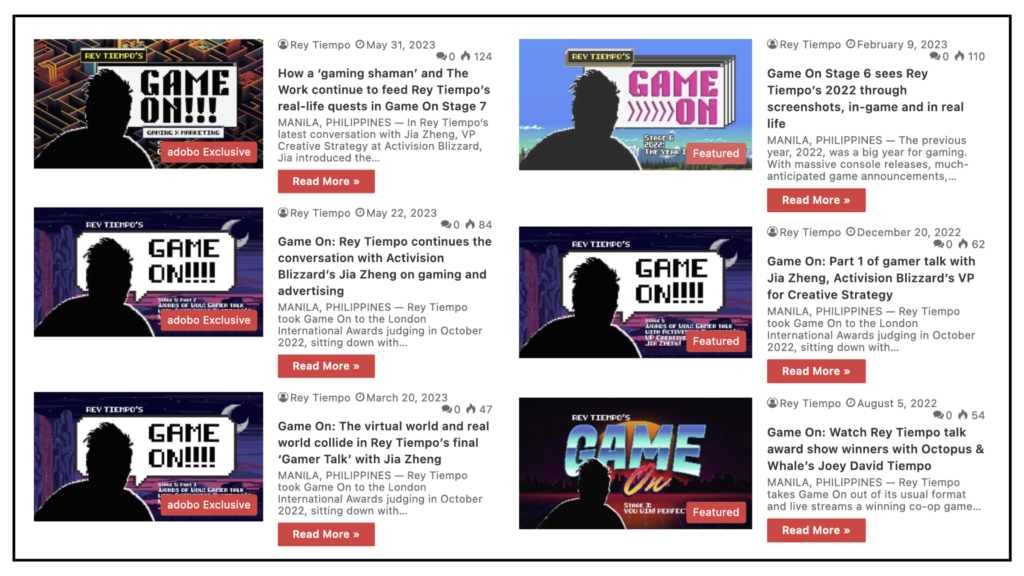
Game On is my very own column at Adobo Magazine, the first that tackles gamingXmarketing
![]()
How has the rise of mobile gaming impacted the overall gaming market?
When discussing mobile gaming and its current impact, it’s essential to explore the evolution of handhelds—devices enabling gaming on the go. Since the inception of video games, the urge to play anywhere and anytime has fueled both gamers and creators.
Growing up, I played on the Nintendo Famicom home console and the Nintendo handheld Game & Watch (there goes my age reveal!). I saw both as proper video game systems that satisfied my gaming itch. As technology advanced and video game systems pushed processing capabilities, handhelds also evolved into peak performers. Flash forward to the current Nintendo Switch system, which I believe is the pinnacle of current handheld gaming (yes, the Steam Deck and other handheld PCs are more powerful, but they owe their existence to the innovations of the Switch). Until a certain generation, handhelds offered solo gaming. The current ones support multiplayer but aren’t communication devices; primarily, they connect players in the gaming realm.
Our telecommunication devices have swiftly evolved, from rotary landlines to early cell phones (telecoms going mobile!), monochrome display phones, to today’s ultra-powerful smartphones. These devices’ processing power advances bring us to video games! Now, we have video games that are not only super advanced in capabilities but also in telecoms. That’s the beauty of mobile gaming—it’s on devices primarily designed for communication. These are handheld games on devices enabling social connections, a crucial ingredient that has made mobile gaming the powerhouse it is.
A powerhouse? Absolutely. With mobiles becoming more powerful, rivaling console counterparts (the new iPhone is notably marketed as THE only gaming console you’ll ever need!), advancing connectivity speeds, and big triple-A game developers backing mobile gaming, it’s poised to become even stronger with no stopping it. Gaming is the new social, fully supported by the new mobile devices. We are increasingly living in a society where gaming is inevitably intertwined with our mobile phone and telecom activities.
Bringing this back to the handheld conversation – we may well end up in a future where the handheld gaming market merges with the mobile gaming market! It’s exciting and looks very promising for gaming, making it a win-win situation for us – what a time to be a gamer!
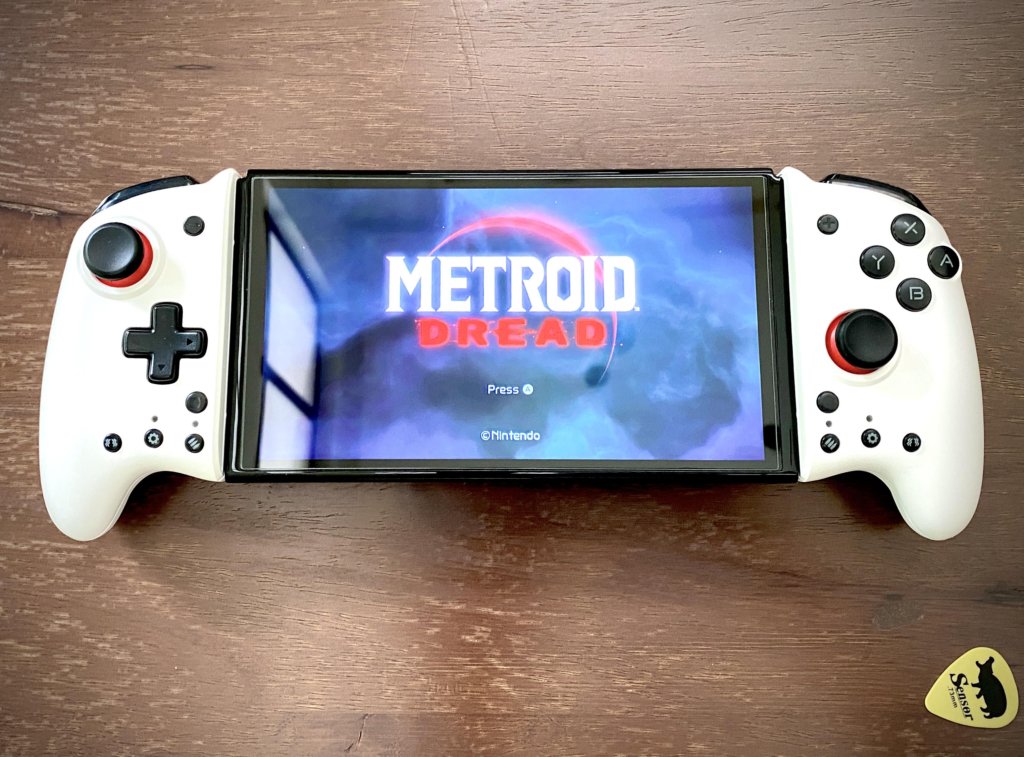
The Switch, still the pinnacle of handheld innovation. But with the rise of mobile gaming, what does the future really hold for gaming on the go?
How do cultural factors and preferences influence advertising and monetization strategies for games in the Philippine market?
In the Philippines primarily, the one significant cultural factor is and always will be economics. Decision-making around gaming (and really, for everything else) revolves around the spending capacity of the market. While the console, PC, and physical and digital games-buying market have shown growth, particularly during and post-pandemic, the numbers suggest that the mobile gaming market will see more significant growth in terms of engagement, reach, time spent, and advertising/marketing strategies. This shift is driven by the business models adopted and expertly implemented by most mobile games, refined over the years. Free-to-play mobile games still have the biggest draw, among all ages, from casual and hyper-casual gamers. In-game activities, like unlocking extras and in-game purchases rake in the most time spent, and garner the most eyeballs (and thumbs!
Advertisers ultimately have to understand: that gaming environments are relatively closed-loop systems. Meaning, as gamers, everything we really need is fulfilled within these games—our escape, refuge, solace, and entertainment. Real-world brands take us out of the experience, and only the most well-thought-out, authentic brand campaigns will get the most welcome reception. It’s a platform built out of passion – and if we don’t see similar, authentic passion coming out of brands, then the risk of alienation is high.
Fortunately, gaming is more than just playing—it includes viewing gaming content, community engagement, and social connections, forming a substantial part of gamers’ behaviour. This landscape evolves as we speak, with advancing technologies, offering new venues for play and connection.
In your experience, what are some successful examples of brands effectively integrating their products or services into gaming environments? How can marketers strike the right balance between brand promotion and providing an enjoyable gaming experience?
Having been to Cannes Lions before, this time I delved into the action, covering the winners, juries, and game changers. This coincided with Cannes introducing a new Lion category I love – Entertainment in Gaming! Back in 2012, at my first Cannes Lions, I won a game console from a booth raffle (you can find the full story in one of my Game On articles), sparking my love for gaming in marketing. Fast forward twelve years, not only did Cannes Lions introduce a gaming category, but I also covered it and was part of the team that secured the country’s first-ever Lions in gaming!
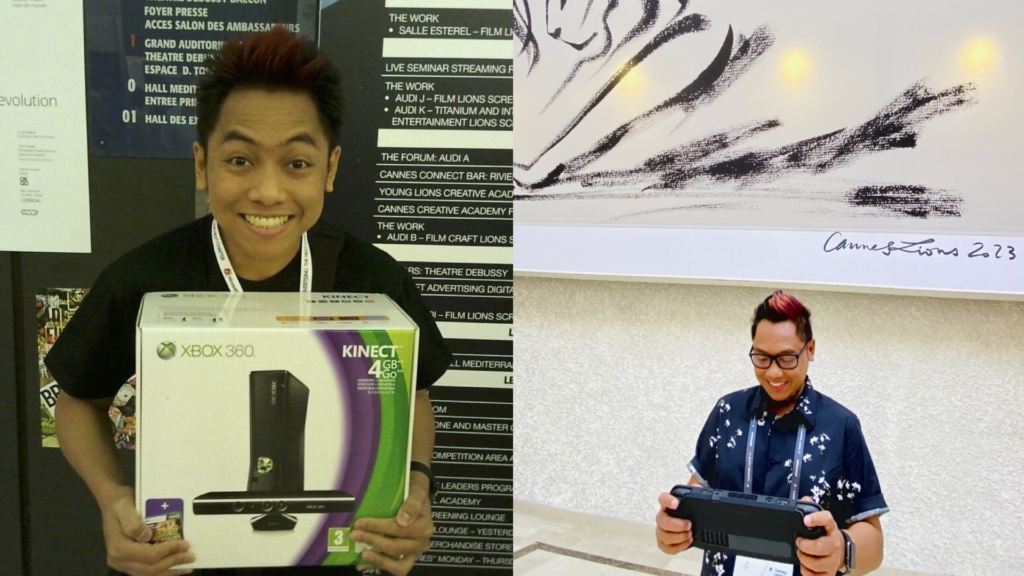
Left, 2012. Right, 2023. Different console eras, same happy gamer.
As a new category, gaming, in the minds of Cannes Lions and the creative fields, has much room to grow and evolve. Brands have taken creative steps even before the official category existed. For instance, in 2019, Cannes Lions introduced the Social and Influencer category, and Wendy’s Fortnite work won the Grand Prix—a gaming case despite the absence of a dedicated category. This stands as an exemplary instance of branded gaming work, showcasing breakthrough creativity activated through a gaming-endemic brand experience.
As someone deeply immersed in gaming, music, and comic books, how have these personal passions shaped your creative approach to marketing? Can you provide instances of how you’ve integrated these interests into your professional work?
I strongly believe that the creativity in your work depends on your passions. Keep fueling your bottomless cup of passion, and your work will never run out of ideas. I live by the mantra of “playing while working,” incorporating play into everything I do and striving to have fun at work. For me, “play” means video games, gaming culture, music, books, and comics. My scripts, stories, and jokes are influenced by comic book tropes, superhero and villain archetypes, and fantasy worlds created by my favorite authors.
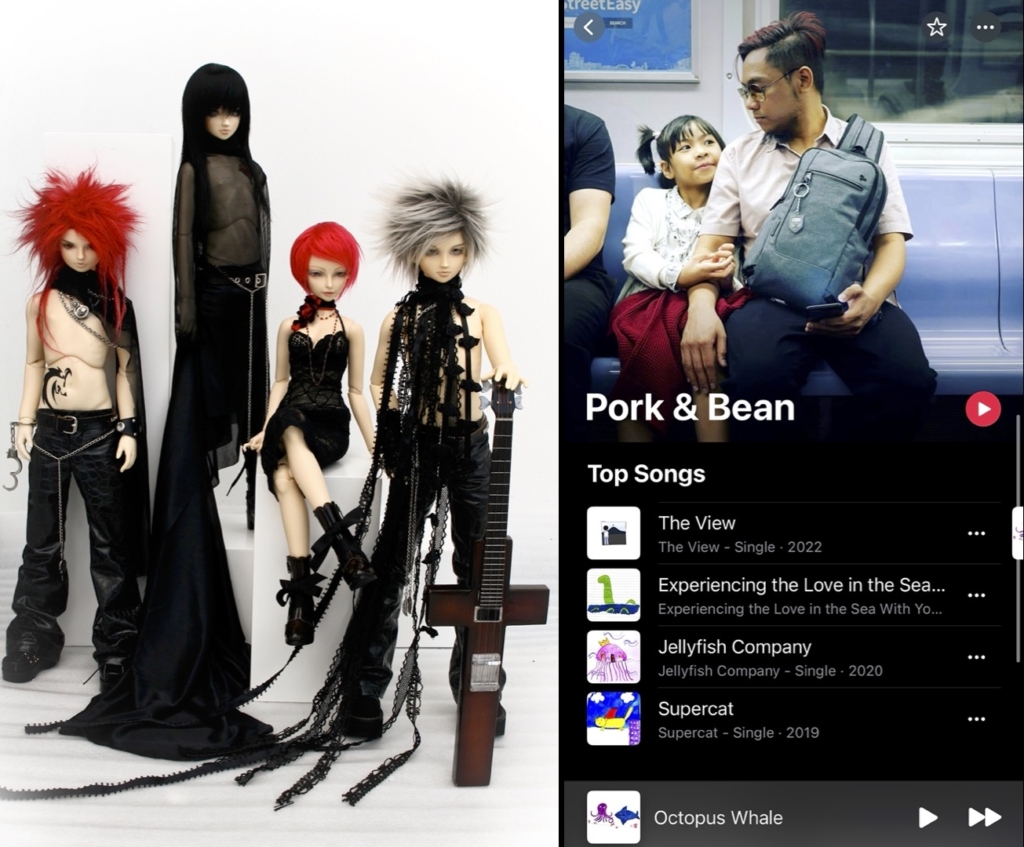
Find both Mistula and Pork & Bean on Spotify, Apple music, Deezer, and other music streaming sites and apps!
I love working on radio and audio—it’s my way of giving voices to the wild characters in my head! Besides releasing original music online through my bands (Find Mistula and Pork&Bean on Spotify and other music streaming sites!), I’ve dabbled in playing around with audio. One such project involved using Dolby Atmos audio tech to team up with the amazing Japanese voice artist Ami Yamasaki, showcasing the plastic pollution problem in a unique cinema activation.
Working with the National Economic and Development Authority, we were able to use numbers gathered from the country’s GDP, and then turned the data into an actual song!
I have been a huge gamer since forever, and true to my mantra of “playing while working”, have now went full-on gamingXmarketing creative, championing the creative marketing opportunities in gaming. My team was able to work with Facebook Gaming to promote education in the game streaming platform, in this fun and inspiring work:
This latest work feels both like a culmination, as well as the start of something really magical in the gamingXmarketing world. I feel proud to have worked with a team with authentic gamers’ sensibilities, but prouder still, knowing that this strong gaming work came from Asia, and the Philippines, where gaming culture is one of the strongest in the world.
In a few days, I’ll be covering one of Asia’s largest gaming conventions for an upcoming column. I’ll be previewing upcoming games, connecting with fellow enthusiasts, meeting gaming clients, and exploring the latest in gaming tech and culture—a perfect blend of “playing while working.” Wouldn’t have it any other way!
As Head of Experience and Innovation at Digitas, what role do you see data and analytics playing in the gaming marketing landscape? How can marketers leverage data-driven insights to better understand their target audience and optimize their campaigns?
Not just in gaming, but data and analytics play huge, pivotal roles in today’s advertising and marketing landscape. Data is everywhere, and everything is information. If you know where to look and more importantly HOW to look at data, then you literally have the world in the palm of your hands. Because more than having the data (and currently, there are lots of studies out there on gaming and the gaming audience) the challenge really for marketers is to interpret the information, to come up with the most authentic insights. And that’s where the experience and intellect of an instinctively sharp marketer come into play. But not just any marketer – in the gaming world and to the gaming audience, authenticity is crucial. It will take a marketer who is also a gamer to understand the context, a gamer who is deeply steeped in the communities and the lore of the games, and the behind-the-scenes gossip (yes, that counts as info too!) and the relationship between developers, and publishers and players, to be able to know how to really connect all the dots. Find these people, mine these people – chances are, they’re already embedded in your teams!
As the recipient of the Philippines’ first-ever Cannes Lions in the Entertainment Lions in Gaming category, can you share the key elements that made your campaign successful? What do you believe sets it apart from other entries?
Crafting impactful gamingXmarketing requires careful planning and integration of agencies through Publicis Groupe Philippines’ “Power of One.” The collaboration of Digitas, MSL, Leo Burnett, Prodigious, and gaming communities exemplifies thought leadership. Contrary to a creative gaming myth, “Unbranded Menu” disproves the need for big budgets and cutting-edge tech, emphasizing a strong, gaming-endemic idea.
The first real breakthrough came realizing McDonald’s was just reclaiming what was inherently theirs in the gaming world. For gamers, it’s common to find game developers parodying McDonald’s in various genres, making it instantly recognizable. No need for costly partnerships with game publishers—McDonald’s “unbranded” branding was already woven into these game worlds. Our task was simply to REMIND gamers of this hiding-in-plain-sight fact!
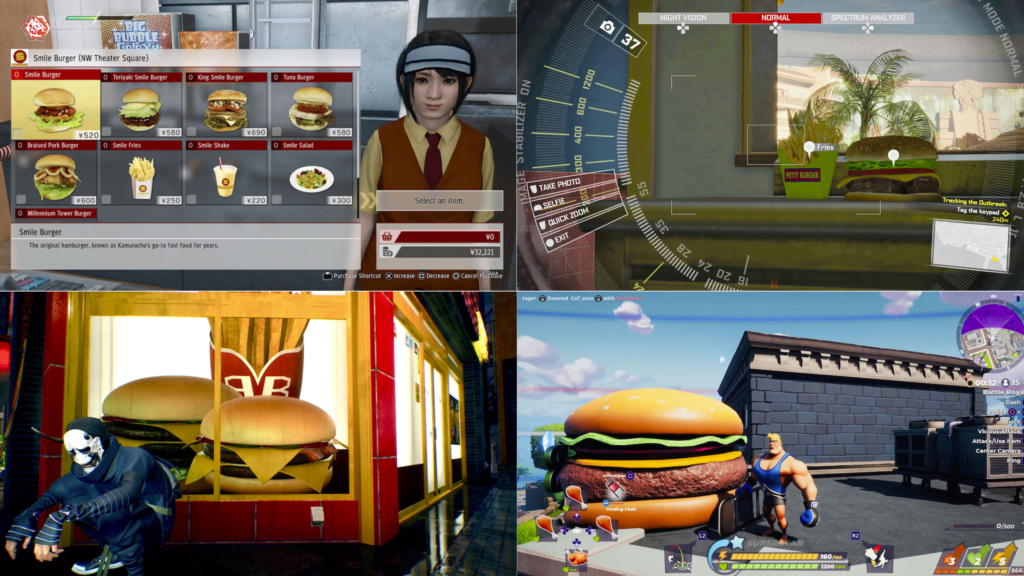
McDonald’s food has been hiding in plain sight in the games you’re playing!
The second breakthrough was taking the idea to social, and engaging gaming communities. Partnering with communities’ spokespersons and “celebrities”,(and they can be micro and hyper-targeted Twitch and Discord groups),we were able to engage their already dedicated followers of gamers. We sparked a “hunt” for McDo food-alikes in their games and turned it into a mini-game, keeping gamers in their gaming world. Gamers just needed to screengrab and share the food-alikes on their social feeds.
The final breakthrough involved the creative process. Despite “traditional” advertising and marketing instincts urging us to add more elements, we resisted and kept the campaign organic. We questioned the simplicity, thinking, “It can’t be this simple, right?” But it was, and it should be. Award show juries consistently praise the work for its simplicity. So, yes, keep everything simple!
In your perspective as a gamer, what stands out as the critical factor for marketers aiming to engage the gaming community? How can brands establish genuine connections with gamers, fostering enduring relationships grounded in mutual trust and aligned values?
Participation, participation, participation. Just go and play: there’s an endless list of titles, genres, styles, levels of difficulties, aesthetics, and moods of games out there, you will definitely find something you’ll like, I guarantee it. If you don’t know where to start… then maybe a gaming shaman can help. Email me at gameonshaman@gmail.com!
Explore the comprehensive and insightful details of Rey Tiempo’s interview in our exclusive blog-“Navigating the Creative Cosmos with Rey Tiempo: A Deep Dive into Gaming, Marketing, and Beyond” to know more about the secrets behind the Philippines’ first-ever Cannes Lions in Gaming and the success stories from Cannes.
Revolutionizing Philippine Gaming: Adscholars and iion’s Dynamic Partnership
The leading ad tech provider Adscholars has partnered with global gaming advertising leader iion. This collaboration aims to redefine the gaming advertising landscape in the Philippines amidst an industry boom, boasting a gamer population of 43 million, according to Newzoo. The partnership brings one-of-a-kind technology and programmatic-enabled gaming inventory solutions to the Philippine market. iion will scale immersive gaming solutions in this market, using Adscholars’ programmatic expertise. It will offer multiple activation options and unique experiences to connect with consumers on their preferred platforms.
The collaboration between Adscholars and iion arrives at a crucial juncture, as brands seek to reach the gaming audience in the Philippines. This partnership enables iion to utilize Adscholars’ market knowledge and brand collaborations, resulting in immersive and contextually fitting in-game, around the game and away from the game advertising encounters. iion’s immersiion is the first platform to connect game publishers and brands seamlessly across all digital worlds, providing a holistic targeting experience in-game, around the game, and beyond.
Gaming Boom in Philippine Market
Recent reports indicate that the Philippines is among the select group of five nations poised to emerge as a major gaming market within the Asia Pacific region. According to a comprehensive study conducted by Newzoo, a prominent provider of market intelligence within the gaming industry, the Philippines boasts a substantial gamer population of 43 million, with a projected growth rate of 14.3 percent spanning from 2020 to 2023. The growing popularity of online gaming in the country is driven by faster internet availability, more smartphone users, and the thriving eSports industry. The strategic partnership between Adscholars and iion places them at the forefront of innovative game advertising in the Philippines, ushering in a new era of industry growth amid the nation’s burgeoning gaming landscape.
Srikanth Rayaprolu, CEO of Adscholars said, “We are thrilled to announce our collaboration with iion, a prominent advertising platform that extends its reach across diverse gaming environments. As the gaming industry continues to flourish in the Philippines market, Ad Scholars, in partnership with iion Gaming, is set to provide brands with an exceptional opportunity to connect with gamers both within the gaming realm and in its periphery. This collaboration promises exciting creative possibilities that will actively engage your brand with this dynamic gaming audience.”
Yun Yip, iion’s Chief Commercial Officer says, “With AdScholars, we are poised to reshape the game advertising landscape in APAC. Our collaborative efforts and platform will empower brands and agencies to explore new ways of engaging with an ever growing audience, whilst delivering superior marketing outcomes in game advertising. A successful gaming strategy is a now possible, accessible and measurable”


